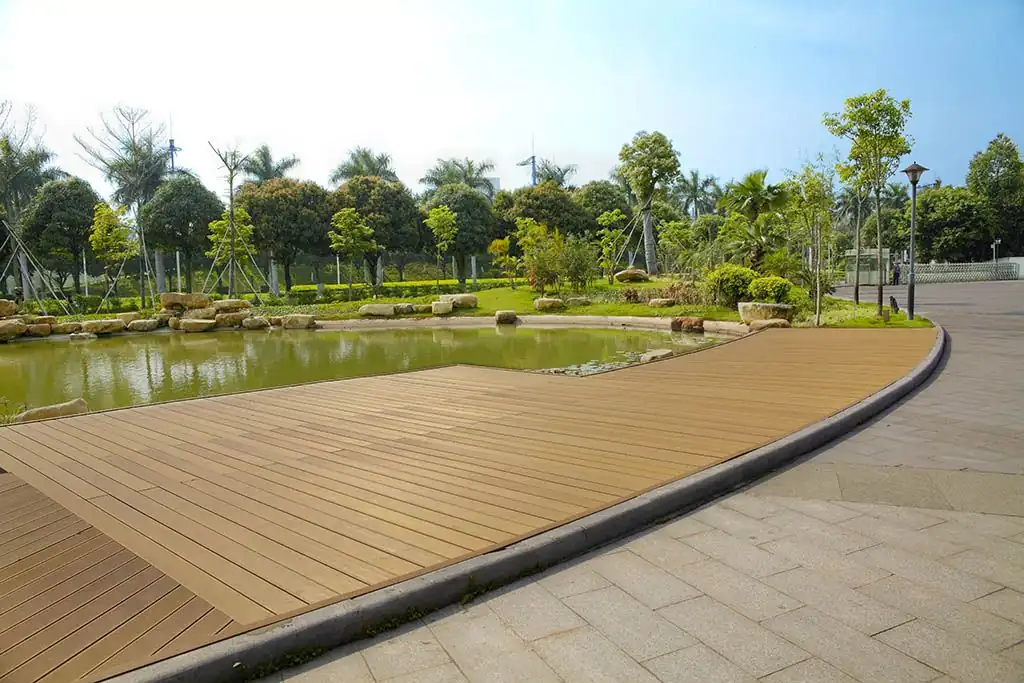Messi Biology states that in home decoration and outdoor landscape engineering, PE wood-plastic composite (WPC) flooring has become a popular choice due to its dual advantages of “wood-like texture and waterproof durability.” However, many people are unaware that behind the performance breakthrough of this material lies a key modification technology: the application of stearic acid modified magnesium hydroxide. It acts like a “protective armor” for the flooring, not only solving the inherent defects of traditional materials but also achieving a perfect balance between green environmental protection and high performance.

Overcoming “Innate Rejection”: The Bridge Between Inorganic and Organic
Magnesium hydroxide is a common inorganic mineral in nature, but in its untreated, raw powder form, it is difficult to perfecty integrate with PE (polyethylene) plastic. This is because the surface of magnesium hydroxide is covered with hydroxyl groups, making it extremely hydrophilic, while PE plastic is a typical hydrophobic material. When the two are mixed, they tend to agglomerate, much like the separation of oil and water, making them incompatible. This “innate rejection” directly leads to a decline in the mechanical properties of the flooring, not only making it prone to fracture and deformation but also increasing energy consumption during processing due to high viscosity.
The addition of stearic acid precisely solves this problem. Research has found that stearic acid molecules can bind to the surface of magnesium hydroxide through two key reactions: one is a weak esterification reaction between its carboxyl group (—COOH) and the hydroxyl group (—OH) of magnesium hydroxide, and the other is the formation of a stable connection through the acid-base interaction between the acid and the weak base.[1][2] After a modification treatment at 80°C for 60 minutes, the surface of the magnesium hydroxide becomes coated with long, hydrophobic carbon chains, significantly improving its compatibility with PE plastic. It’s like putting a “plastic coat” on the mineral powder.
The value brought by this modification is multi-dimensional. Studies show that the tensile strength and high-temperature stability of PE wood-plastic composite flooring with the addition of ultra-fine modified magnesium hydroxide are significantly improved, maintaining structural stability even at 120°C. More importantly, at high temperatures, magnesium hydroxide decomposes, absorbing heat and releasing water vapor to form a flame-retardant barrier. The stearic acid modification optimizes processing performance without sacrificing the flame-retardant effect, addressing the pain point of traditional flame-retardant flooring being “brittle, hard, and difficult to process.”
Messi Biology’s Technological Breakthrough: Defining High-Performance Modified Magnesium Hydroxide
A high-quality modification effect begins with high-quality magnesium hydroxide at the source. As an industry benchmark, Hebei Messi Biology Co., Ltd.’s pioneering “hydromagnesite method” has been included in the national standard “HG/T 3607-2024 Industrial Magnesium Hydroxide,” establishing a performance advantage from the raw material end. Unlike traditional brine and ore calcination methods, Messi Biology uses natural hydromagnesite as a raw material to produce magnesium hydroxide through a patented “low-temperature activation and directional transformation” technology. This process avoids high-temperature calcination, not only reducing energy consumption by 35% and achieving near-zero wastewater discharge but also ensuring a stable product purity of over 99.5%, with heavy metal residues far below the national standard limits. For PE wood-plastic composite flooring, high purity means less interference from impurities, effectively preventing fluctuations in mechanical properties and color unevenness caused by them.
Even more noteworthy is its unique crystal structure design. Through crystal control technology, Messi Biology produces hexagonal, plate-like magnesium hydroxide particles. This morphology allows the powder to form a more uniform coating layer during stearic acid modification, resulting in significantly improved dispersibility compared to ordinary products. In rubber product applications, products with a similar structure have already achieved a 30% increase in tear strength and a UL94 V-0 flame retardant rating. This advantage can also be transferred to the field of PE wood-plastic composite flooring, making the flooring both impact-resistant and fire-resistant.
To meet the individual needs of wood-plastic composite flooring manufacturers, Messi Biology also provides customized services. Its intelligent production line can accurately control the particle size and surface activity of the powder. Combined with a “technical engineer on-site service” model, it can adjust modification parameters according to the customer’s PE matrix formula and processing technology, helping enterprises reduce their comprehensive production costs by 8%-15%. This full-chain guarantee, from raw materials to services, maximizes the performance value of stearic acid modified magnesium hydroxide.
Empowering Green Building Materials with Technological Innovation
Against the backdrop of the “dual carbon” strategy, the application of modified magnesium hydroxide highlights its ecological value. The production process of Hebei Messi Biology Co., Ltd. has achieved a 40% reduction in process flow and the goal of low-carbon energy savings. Furthermore, its magnesium hydroxide product is non-toxic and harmless, and its decomposition product, magnesium oxide, can be naturally degraded, avoiding the potential environmental pollution of traditional flame retardants. For consumers, this technological upgrade brings a safer living environment—PE wood-plastic composite flooring is not only waterproof, mildew-proof, wear-resistant, and scratch-resistant, but it can also delay the spread of fire in the event of a fire hazard, buying precious time for escape. For the industry, the technological innovation of companies like Messi Biology is driving the evolution of wood-plastic materials from “wood substitutes” to “surpassing wood,” allowing green building materials to truly possess both performance advantages and environmental value.
From the reaction mechanism in the laboratory to large-scale production in the factory, modified magnesium hydroxide is reshaping the quality standards of PE wood-plastic composite flooring. The high-performance base material defined by Hebei Messi Biology Co., Ltd.’s innovative process is not only a participant in industry standards but also a promoter of the upgrading of green building materials, making every piece of flooring a perfect carrier of technology and environmental protection.
